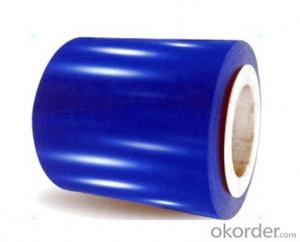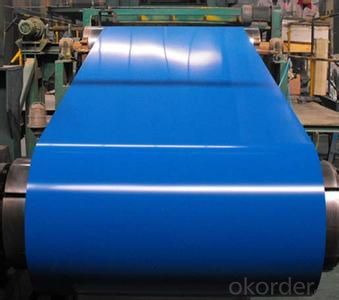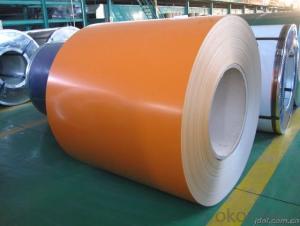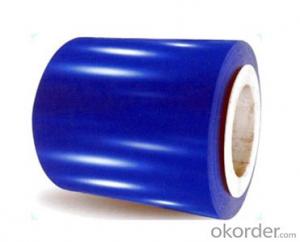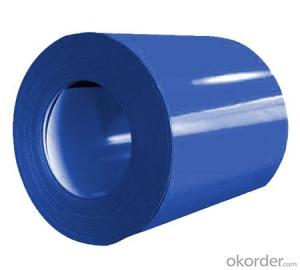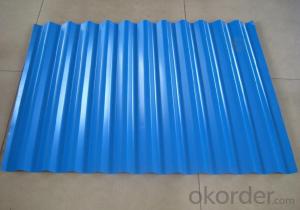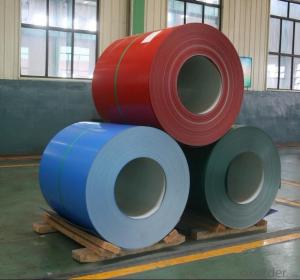Prepainted Galvanized Steel Coil-S250GD+Z with Best Quality
- Loading Port:
- China main port
- Payment Terms:
- TT OR LC
- Min Order Qty:
- 50 m.t.
- Supply Capability:
- 10000 m.t./month
OKorder Service Pledge
OKorder Financial Service
You Might Also Like
Prepainted Galvanized Steel Coil-S250GD+Z with Best Quality
Brief Introduction:
Prepainted Galvanized Steel usually refersto have substrate processed with surface processed and coated then(rollercoated )or bonded organic thin film and baked, and it is able to beprocessed to final prodevtion .
Prepainted Galvanized Steel qualified with excellent decorative ,formability ,corrosionresistance ,coating adhesion ,can keep for a long time as well as maintainfresh color .For color coated steel sheet can obtain good economicbenefit by steel belt wood ,efficient in construction and save energy ,preventpollution etc.Which is an ideal material;for manufacturing board.
Specification:
Thickness:0.15-0.8mm
Width:600-1250mm
Length:on request
Zinccoating: 30-275g/m2
Color:RAL series
Paint:PE, PVDF, PU
Application:
1.Buildings and constructions:roofing, ceilings, gutters, venting lines, indoor decorations,windowframes, etc
2.Electrical appliances:computer shells, washing machines, refrigerators, dehumidifiers,videorecorders, water heaters, etc.
3. Agriculturalequipments: troughs, feeding tools, agricultural driers, irrigation channels,etc.
4. Vehicle parts: back-seat plates of buses and trucks, conveying systems, oil tanks, etc.
Advantages:
1. High strength
2. Well rainproof performance
3. Good corrosion
4. Easy to install and remove
5. FAQ
1.How to guarantee the quality of the products?
We have established the international advanced quality management system,every link from raw material to final product we have strict quality test;We resolutely put an end to unqualified products flowing into the market. At the same time, we will provide necessary follow-up service assurance.
2. How long can we receive the product after purchase?
Usually within thirty working days after receiving buyer’s advance payment or LC. We will arrange the factory manufacturing as soon as possible. The cargo readiness usually takes 15-25 days, but the shipment will depend on the vessel situation.
- Q: Does steel contain nickel?
- *Most of the grades of stainless steel contains nickle except few grades of ferritic/Martensitic stainless steel. For example , SAE416 / SAE 420 does not contain Nickle. See Stainless steel designations table at following link:
- Q: What are the common defects found in steel coils?
- Some common defects found in steel coils include surface defects such as scratches, pits, or dents, as well as edge defects like burrs or cracks. Other defects can include coil set or crossbow, which refers to the shape of the coil being out of alignment or having a curved shape. Additionally, defects such as oil or rust stains, laminations, or variations in thickness can also be found in steel coils.
- Q: Can steel coils be recycled?
- Yes, steel coils can be recycled. Steel is a highly recyclable material, and recycling steel coils helps to conserve natural resources and reduce environmental impact.
- Q: How are steel coils used in the manufacturing of electrical components?
- Steel coils are used in the manufacturing of electrical components primarily as a core material in transformers and inductors. They provide a magnetic path for the flow of electric current, enhancing the efficiency and performance of these devices. Additionally, steel coils are also utilized in the construction of electric motor cores, providing stability and strength to the overall structure.
- Q: How are steel coils used in the production of doors and windows?
- Steel coils are used in the production of doors and windows as they provide the raw material for manufacturing the frames and components. The coils are processed and shaped into the desired profiles, which are then used to construct the frames, sashes, and other structural elements of doors and windows. This ensures strength, durability, and stability in the final products.
- Q: How are steel coils processed for specific applications?
- Steel coils are processed for specific applications through a series of carefully planned steps. The process begins with the selection of the appropriate grade and thickness of steel, which is determined based on the requirements of the end application. Once the steel coils are received, they undergo a series of processing steps to transform them into the desired product. The first step in processing steel coils is known as uncoiling, where the coil is unwound and straightened. This ensures that the coil is flat and ready for further processing. The uncoiled steel is then cleaned to remove any dirt, oil, or rust that may be present on the surface. This is typically done through a process called pickling, which involves immersing the steel in a bath of acid to remove any impurities. After cleaning, the steel undergoes various shaping processes depending on the desired application. This can include processes such as slitting, where the coil is cut into narrower strips, or shearing, where it is cut into specific lengths. These shaping processes are often performed using specialized machinery that can handle the high strength and thickness of steel. Once the steel has been shaped, it may undergo additional processes to enhance its properties. For example, it may be heat treated to increase its strength or hardness, or it may undergo a coating process to improve its corrosion resistance. Coating processes can include techniques such as galvanizing, where the steel is coated with a layer of zinc, or painting, where it is coated with a layer of paint. Finally, the processed steel coils are inspected for quality and undergo any necessary finishing processes. This can include processes such as trimming the edges to remove any irregularities, or applying protective coatings to prevent damage during transportation or storage. Overall, the processing of steel coils for specific applications is a complex and carefully controlled process. It involves a combination of shaping, cleaning, coating, and finishing processes to ensure that the steel meets the required specifications and is ready for use in various industries such as automotive, construction, and manufacturing.
- Q: i like stainless steel guns, especially the SW 686 .357, i plan on getting one but my question is would polishing the stainless steel make the gun more prone to corrosion over leaving it as it is? and will the polished surface appear uneven after use and sitting? obviously all metal takes some sort of upkeep but is polished more high maintenance than non-polished?
- The SW 686 is a great revolver. I have the model 586 (blued) and intend to get a 686 and do the same thing - polish it to a mirror finish. There is a great video on YouTube that shows a man polishing his stainless steel revolvers to a mirror finish. He uses Mother's Mag Wheel Polish. Polishing the gun to a bright mirror finish will not in any was reduce the rust resistance of the metal. However, it will do two things. First, it will show scratches and flaws more over time. So if the gun gets mishandled, you will notice the marks on the finish. Second, when shooting in bright sunlight, you might not be able to aim the gun at all. I've had this happen to me with the old polished nickle finish revolvers; I had a Colt Diamondback with a bright nickle finish and it was impossible to aim when the sun was beating down on it. For a fun project gun, I think that a polished stainless finish is neat. It's not something I would want to use for hunting or personal protection, but sort of a bragging piece at the gun range.
- Q: How are steel coils protected against UV radiation?
- Steel coils are protected against UV radiation through the application of protective coatings or paints. These coatings act as a barrier, shielding the steel from direct exposure to UV rays, preventing oxidation and degradation of the metal.
- Q: How are steel coils protected from mechanical damage?
- Steel coils are protected from mechanical damage through various methods such as using protective packaging materials like wooden crates or metal bands, applying plastic or paper interleaving, and utilizing specialized handling equipment during transportation and storage.
- Q: What are the weight ranges of steel coils?
- The weight of steel coils can differ based on their dimensions and intended purpose. In general, steel coils can weigh anywhere from a few hundred pounds to several tons. For instance, hot-rolled steel coils generally fall between 10 and 25 tons, while cold-rolled steel coils can range from a few hundred pounds to 20 tons. The weight of steel coils is also influenced by factors like coil thickness, width, grade, and steel type. Ultimately, the weight range of steel coils is determined by the industry and application requirements.
Send your message to us
Prepainted Galvanized Steel Coil-S250GD+Z with Best Quality
- Loading Port:
- China main port
- Payment Terms:
- TT OR LC
- Min Order Qty:
- 50 m.t.
- Supply Capability:
- 10000 m.t./month
OKorder Service Pledge
OKorder Financial Service
Similar products
Hot products
Hot Searches
Related keywords
